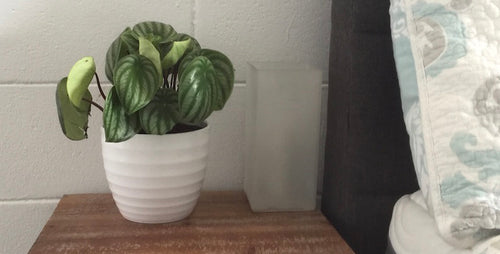The holes in some plant leaves offer an exotic (and much sought-after) look. Plant species, such as monstera and pothos,
produce leaves that are deeply split and with holes and slits in the interior part of the leaf. Leaf holes are called
perforate leaves or fenestrate leaves. The word fenestration comes from Latin fenestratus which means,
“provided with openings.” In the language of Botany, fenestrate means “having small perforations or transparent
areas.” Like little windows!
Why do some plants produce holey leaves?
There are
several theories as to why some plants grow this way. One is that it facilitates air flow through the leaves that can
help in high winds. Another theory is that the holes help cool the plant. Or capture light better. Or that the
perforations help camouflage the plant, protecting it from grazing animals. Regardless of why the plant does this,
fenestrated plants are coveted by plant aficionados around the world.
You can encourage holes
You can help facilitate fenestration in plants that naturally produce holes. For example, monstera leaves
become holey as they age and grow bigger. Monstera deliciosa
(sometimes called split-leaf philodendron) typically grows to at least 3 feet wide before they produce leaves with
holes. 'Cebu Blue' pothos will fenestrate only if it climbs; this
plant also needs some age before the leaf splits appear. If you are impatient for your monstera to produce holes, try Monstera adansonii, which is bushier than
Monstera deliciosa and produces smaller leaves with holes in younger plants.

Lobed plants are cool, too
Why do some plants produce holey leaves?
There are
several theories as to why some plants grow this way. One is that it facilitates air flow through the leaves that can
help in high winds. Another theory is that the holes help cool the plant. Or capture light better. Or that the
perforations help camouflage the plant, protecting it from grazing animals. Regardless of why the plant does this,
fenestrated plants are coveted by plant aficionados around the world. You can encourage holes
You can help facilitate fenestration in plants that naturally produce holes. For example, monstera leaves
become holey as they age and grow bigger. Monstera deliciosa
(sometimes called split-leaf philodendron) typically grows to at least 3 feet wide before they produce leaves with
holes. 'Cebu Blue' pothos will fenestrate only if it climbs; this
plant also needs some age before the leaf splits appear. If you are impatient for your monstera to produce holes, try Monstera adansonii, which is bushier than
Monstera deliciosa and produces smaller leaves with holes in younger plants. 
Lobed plants are cool, too
Deeply lobed plants may look like they have leaf holes, but on closer inspection, the
leaves have such deeply scalloped edges that they just look like holes. Monsteras may produce lobed leaves.
Philodendrons such as Philodendron bipinnatifidum (aka
Selloum) and Philodendron 'Xanadu' are also
examples of deeply lobed leaves.
Written by Karen Weir-Jimerson
















